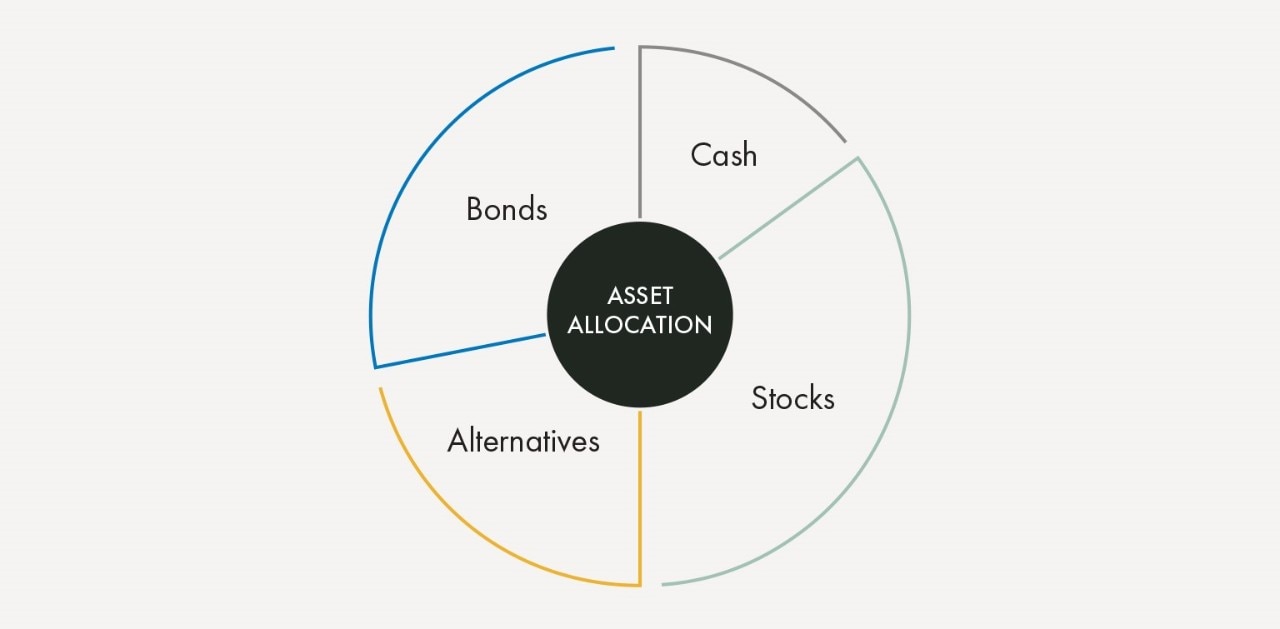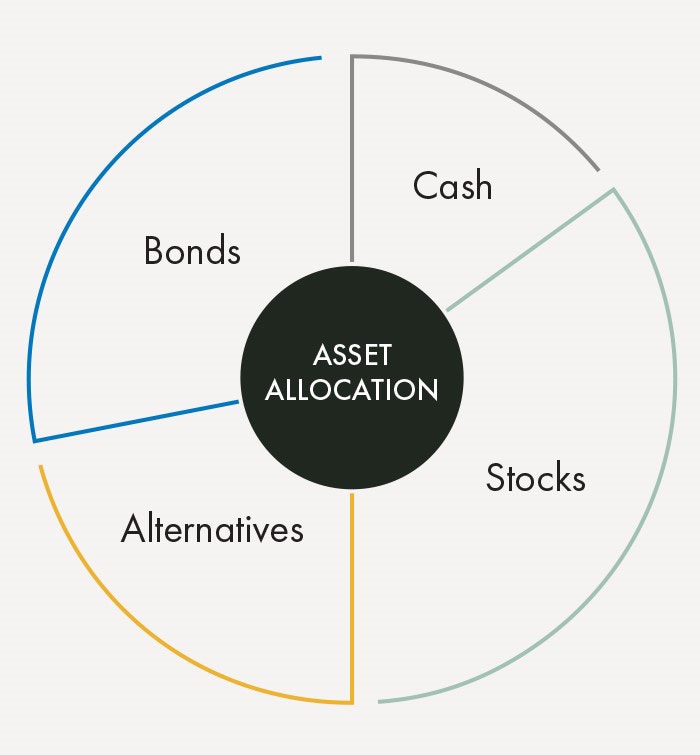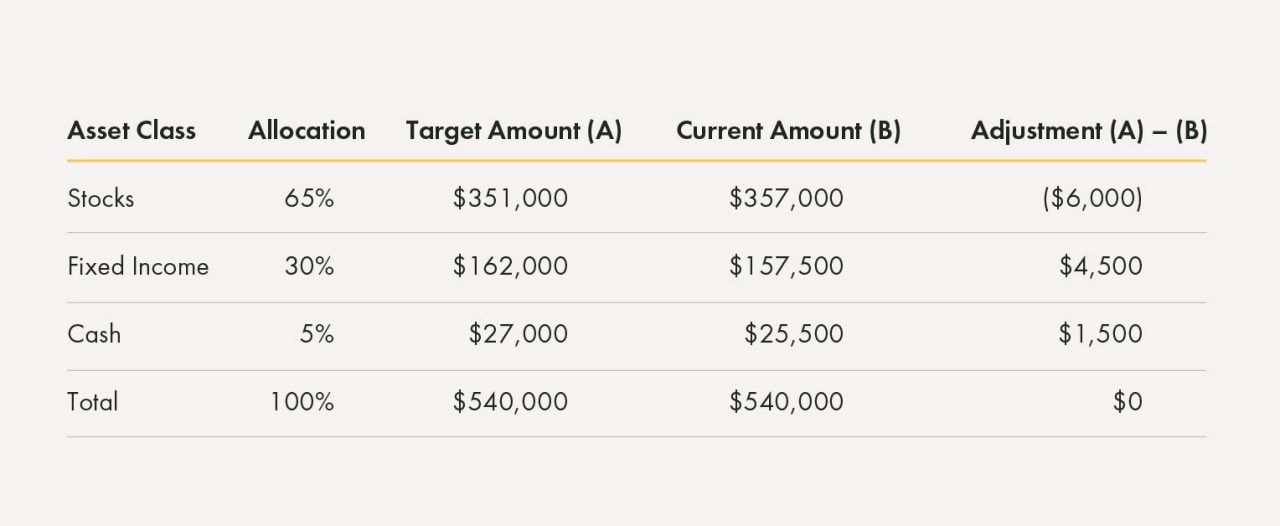- Not insured by the FDIC or any other government agency
- Not bank guaranteed
- Not a deposit or obligation
- May lose value


When it comes to investing your assets, choosing the best long-term approach is an important step. If the strategy is executed correctly, it can help minimize risk and potentially improve returns. Read more about strategic asset allocation and consider whether this is best for you.
Developing an individualized wealth plan centered on strategic asset allocation enables you to account for numerous factors when determining investments.
Broadly, a strategic asset allocation (SAA) is a wealth management and investment strategy where you determine target amounts for different asset classes and then rebalance your overall portfolio at set intervals. As you realize returns on investments, you will need to rebalance your portfolio to maintain the target amounts.


When allocating your assets, consider the percentage that you want to invest among equities (e.g., stocks), fixed income assets, cash, and other securities. If you have a $500,000 portfolio, you could adopt a moderate approach allocating 65% to stocks, 30% to fixed income, and 5% to cash. This would equal $325,000 in stocks, $150,000 in fixed income, and $25,000 in cash.
Depending on the returns among each allocation, you would need to rebalance your portfolio at set intervals. In this example, let’s say one year. Let’s assume that in this year, the stocks returned 10% value, while the fixed income returned 5% and the cash 2%.


In this case, $6,000 from the stock allocation must be sold for the stock allocation to be 65%. The proceeds from the sale will be used to buy $4,500 in fixed income with the remaining $1,500 sent to the cash allocation.
This strategy can also take into account tactical opportunities to allow current amounts to deviate, but generally within ranges to ensure that you remain in control of the allocations. In so doing, this approach maintains a balance between having enough flexibility to take advantage of intermediate term opportunities while staying disciplined to one’s long-term plan.
Your particular SAA strategy depends on factors unique to you, including your risk tolerance, time horizon, age, and investment objectives.
Risk tolerance is a measure of the level of risk you are willing and able to accept within your financial portfolio. Determining your tolerance and comfort level before allocating assets is important. Often times, your risk tolerance can be tied to your age. Those at the beginning of their careers will want to invest more aggressively because they have the decades to regain losses. But if retirement looms soon, a more conservative approach would protect your income stream.
Below you will see typical asset allocations based on risk tolerance. You can think of the scale from very conservative to very aggressive as the inverse of the investor’s age (i.e., “very conservative” = closet to retirement and “very aggressive” = start of one’s career).
Similar to its influence on your risk tolerance, your age may also influence your time horizon, or the period during which you hope to invest before you’ll need the money.
For instance, if you are doing financial planning for retirement while at the start of your career, your time horizon may be forty years. But if the goal is to purchase a house, your time horizon may be as short as five years.
Your objectives may change over time. Are you planning for business succession? General wealth planning? College savings? Retirement planning?
No matter your objective, using an SAA strategy allows you to invest more aggressively or conservatively based on the factors unique to your circumstances.
One of the major reasons you may consider an SAA approach is to plan for your retirement. Like most investment strategies, the goal of SAA is to minimize risk and maximize returns by diversifying your portfolio. SAA provides that diversification.
A popular approach is the 100 Rule: Subtract your age from 100 and allocate the result as a percentage of stocks. This is because the younger you are, the higher the risk tolerance and longer the time horizon, while the inverse is true for those closer to retirement age.
However, as the average American lifespan increases and 25- or even 30-year retirements become more common, a 120 Rule or 110 Rule is becoming increasingly popular. Each increases the risk tolerance, so again consider how aggressively you should invest in securities.
The point: There is no one-size-fits-all approach.
Creating an approach to retirement planning or wealth management that aligns with your goals takes time. Choosing where and how to invest your assets may seem like a challenge, but the proper help and guidance can help you toward achieving your goals.
Yellow Cardinal Advisory Group offers customized solutions and a personalized approach to assist our clients with developing a roadmap to their desired goals. We have specialists who provide wealth management and financial planning services to help you get you where you want to go.
Reach out to us when you’re ready to begin.
The information on this page is accurate as of May 2022 and is subject to change. First Financial Bank and Yellow Cardinal Advisory Group are not affiliated with any third-parties or third-party websites mentioned above. Any reference to any person, organization, activity, product, and/or service does not constitute or imply an endorsement. By clicking on a third-party link, you acknowledge you are leaving bankatfirst.com. First Financial Bank and Yellow Cardinal Advisory Group are not responsible for the content or security of any linked web page.
You are about to go to a different website or app. The privacy and security policies of this site may be different than ours. We do not control and are not responsible for the content, products or services.
Online banking services for individuals and small/medium-sized businesses.
If you haven't enrolled yet, please enroll in online banking.
Yellow Cardinal resources
* Are not insured by the FDIC. Not a deposit. May lose value.
f1RSTNAVIGATOR is where our business clients can access tools to help manage day-to-day account activity.